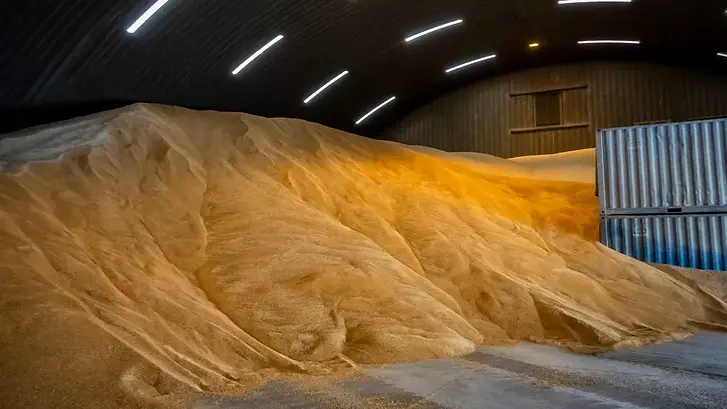

DDGS
DDGS, or dried distillers grains with solubles, is a byproduct of the ethanol production process, which involves fermenting corn or other grains to produce ethanol fuel. DDGS is a popular animal feed ingredient due to its high protein and energy content, as well as its relatively low cost compared to other protein sources.
The nutritional composition of DDGS can vary depending on the source and production process, but it typically contains between 25% and 30% crude protein, as well as high levels of fiber and fat. The protein in DDGS is considered to be relatively high quality, with a good balance of essential amino acids.
The high fiber content can also be beneficial for animal health, promoting digestive function and overall gut health. In addition to its nutritional value, DDGS also has a lower environmental impact than some other feed ingredients, as it is a byproduct of the ethanol production process and helps to reduce waste. However, it may also contain certain antinutritional factors, such as mycotoxins, which can reduce nutrient availability and digestibility in animals. Proper storage and handling can help to minimize the impact of these factors.
Overall, DDGS is a widely used and valuable feed ingredient for many types of livestock, providing a good source of protein, energy, and fiber. Its cost-effectiveness and availability make it a popular choice in animal feed formulations.
Specification
The specifications for DDGS (dried distillers grains with solubles) can vary depending on the source and production process, but here are some general specifications:
-
Protein content: The protein content of DDGS typically ranges from 25% to 30%, with some variations depending on the source and processing method.
-
Fiber content: DDGS is high in fiber, typically containing between 8% and 15% crude fiber.
-
Fat content: DDGS can contain varying levels of fat, typically ranging from 6% to 12%.
-
Moisture content: DDGS should have a moisture content of less than 12% for optimal storage and quality.
-
Ash content: The ash content of DDGS can range from 4% to 8%.
-
Aflatoxin levels: DDGS should have low levels of aflatoxins, which are harmful fungal toxins that can occur in some feed ingredients.
-
Pesticide residues: DDGS should be free from harmful levels of pesticide residues.
-
Antinutritional factors: DDGS may contain certain antinutritional factors, such as mycotoxins, which can reduce nutrient availability and digestibility in animals. Proper storage and handling can help to minimize the impact of these factors.
These are just a few of the key specifications that may be used to evaluate the quality of DDGS. The specific requirements may vary depending on the intended use of the DDGS, such as for poultry, swine, or dairy cattle feed.






